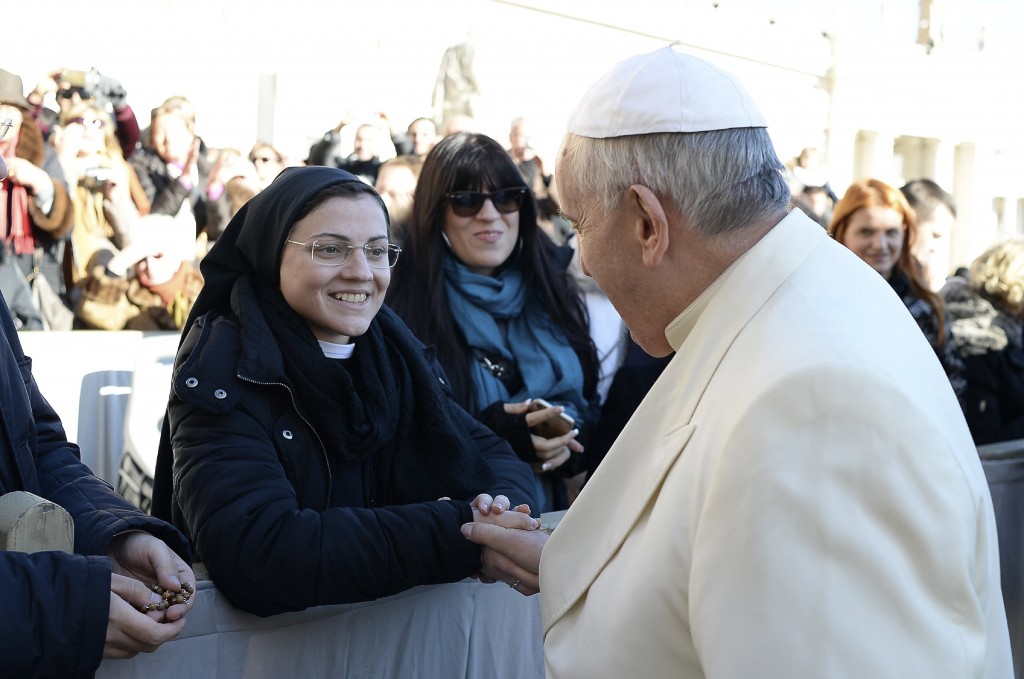
Patti Brassington, a member of Blessed Sacrament Church in Charleston, makes sure there is always someone scheduled to spend time with Christ in the church’s perpetual adoration chapel, which has been open for 33 years.
She even carries her scheduling materials with her on trips in case someone needs to call her, because she believes adoration is one of the most important practices for the faithful.
“It’s our personal time with Christ, a time when you can do whatever brings you closer to Him,” she said. “Nobody wants anything from you, you don’t need to talk to anybody — you focus on your personal connection with God.”
The men and women who keep adoration going at Blessed Sacrament Church, which is the oldest of many sites in the state, carry on one of the church’s most important and longstanding devotions.
From the time of St. Basil
Adoring Christ’s presence in the Eucharist dates back to the earliest days of the Church, but one of the earliest possible references to the practice comes from the life of second-century St. Basil, who was said to divide the host into three parts when he celebrated Mass: one he consumed, one he gave to his monks, and the third he placed for reverence in a golden dove above the altar. St. Francis of Assisi was credited with spreading the practice in Italy.
According to the Catholic Encyclopedia, formal practice of adoration by lay people is said to have started in Avignon, France, on Sept. 11, 1226, when King Louis VIII asked that the consecrated host be displayed in a chapel in thanksgiving for victory in battle. So many adorers came that the local bishop received permission from Pope Honorius III to display the blessed sacrament constantly.
The devotion became even more popular after the Feast of Corpus Christi was instituted in the 13th century, and the Council of Trent affirmed the practice in the 16th century.
Adoration became widespread in the United States in the 1800s, and the practice has been praised in the writings of popes and saints.
A ‘priceless treasure’
One of the most powerful endorsements comes from Pope St. John Paul II in his 2003 encyclical “Ecclesia de Eucharistica” (“The Church from the Eucharist). He describes adoration as one of the highest forms of prayer and says it perpetuates the bond created between Jesus and His people through communion during the Mass.
“It is pleasant to spend time with him … to feel the infinite love present in his heart,” he wrote. “If in our time Christians must be distinguished above all by the ‘art of prayer,’ how can we not feel a renewed need to spend time in spiritual converse, in silent adoration, in heartfelt love before Christ present in the Most Holy Sacrament?”
St. John Paul II called the Eucharist a “priceless treasure” and said “by praying before it outside of Mass we are enabled to make contact with the very wellspring of grace.” He said the devotion “prolongs and increases the fruits of our communion in the body and blood of the Lord.”
St. Alphonsus Liguori wrote an entire book on it, saying: “Of all devotions, that of adoring Jesus in the Blessed Sacrament is the greatest after the sacraments, the one dearest to God and the one most helpful to us.”
St. Mary Magdalene dei Pazzi, a 16th-century Italian Carmelite nun and mystic, recommended adoration as a spiritual respite from the world: “Make visits to Jesus Christ in the Blessed Sacrament. It is especially at the foot of the altar that one prays well. You will also find these visits very conducive in you to increase divine love.”
The presence of God
Some people hesitate to try the practice because they’re unsure what to do. It’s important to remember that there is no formal ritual.
Father Stan Smolenski, spma, director of the Shrine of Our Lady of South Carolina-Our Lady of Joyful Hope in Kingstree, said some are unable to quiet their minds enough to simply sit in contemplation the first few times. As a beginning, he suggests praying the rosary or doing spiritual readings that focus on the Eucharist.
Blessed Sacrament Church offers a guide that suggests praying psalms or the Liturgy of the Hours, meditating using Scripture, reading about the life of a saint, offering prayers of thanksgiving to Jesus, or asking forgiveness.
“For many people, adoration is the one place where they can go and be by themselves, think and be there in the presence of God,” Brassington said. “In the world we live in, where everything is going 90 miles an hour and it’s never quiet, adoration is a place to stop and have some peace of mind.”
The most important thing to remember is that adoration is a chance to spend time with Christ and focus on His love.
“Absolutely take advantage of adoration when it is available, because remember Christ is waiting for us there,” Father Smolenski said. “People should realize that in the adoration chapel, they have a friend waiting for them. We make time for everybody and everything else in our lives. It’s important to make time for Christ, to go to Him not just when we need something, but just to be with Him.”
Visit therealpresence.org to see adoration listings by state.


